Cycling enthusiasts are constantly searching for ways to improve their speed and performance on the road. From aerodynamic helmets to high-tech cycling shoes, there are several tools out there to help both casual and competitive cyclists take their rides to the next level. One of the most crucial components to consider is the handlebar. Introducing the carbon aero handlebar - a highly effective tool to unlock speed and performance on your rides.
1. What is a Carbon Aero Handlebar?
A carbon aero handlebar is a lightweight component, made from high-quality materials like carbon fiber, designed to enhance the aerodynamic capabilities of a bike. Unlike traditional handlebars that are round and tapered, aero handlebars are flat and streamlined. This design helps to reduce wind resistance and provides a smoother ride with better control. Carbon fiber is the preferred material for aero handlebars because it is lightweight, durable, and provides better shock absorption.
2. Benefits of a Carbon Aero Handlebar
The benefits of a carbon aero handlebar go beyond just reducing wind resistance. They provide superior stability and control, reducing pressure on your hands and wrist when riding in a low position. Aero handlebars also provide improved grip, increasing your leverage and enhancing your overall performance.
One of the biggest benefits of the carbon fiber component is weight reduction. Reduced weight allows the rider to improve their overall speed and endurance as less energy is required to pedal. With the addition of an aero handlebar, the overall weight of the bike can be significantly reduced, allowing for faster and more efficient cycling.
3. Installation and Maintenance
Installations of a carbon aero handlebar can be easy or complex, depending on the type of bike and its components. It is essential to seek assistance from a professional and ensure that the handlebar is properly fitted to provide optimal performance. Proper maintenance is also crucial for longevity and performance. Carbon fiber components must be handled with care to prevent damage and should be inspected regularly for cracks or other damages that could compromise their integrity.
4. Cost Implications
The cost implication of a carbon aero handlebar depends on the type, quality, and design. The carbon fiber design is more expensive than traditional handlebars, but the price is justified by the performance-enhancing benefits. It's important to determine your budget for the project while also considering the potential cost-saving benefits over time.
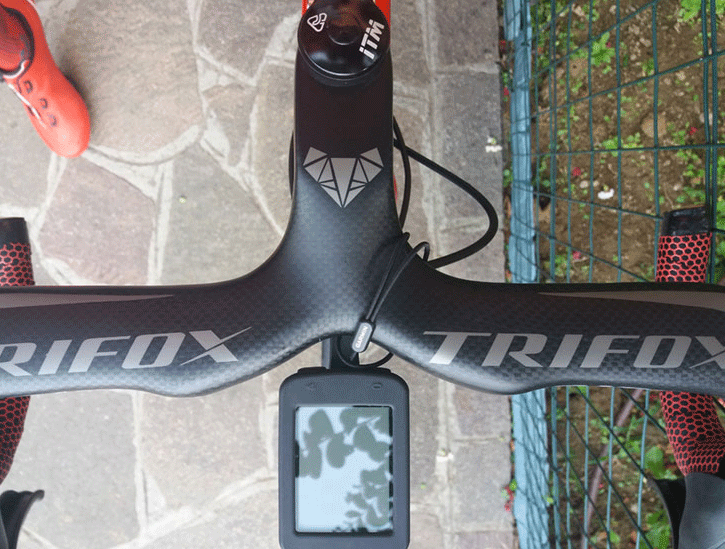
Conclusion:
In conclusion, using a carbon aero handlebar is a smart and effective way to improve your speed and performance during your rides. The high-quality components provide superior stability, control, and grip, significantly reducing pressure on your wrist and hands. It also enhances your speed and endurance, allowing you to ride longer and faster. Although they may cost more than traditional handlebars, the long-term cost-saving benefits and improved cycling experience is worth every penny. With the addition of carbon aero handlebars, you can transform any ride into a smoother, faster, and more enjoyable experience.
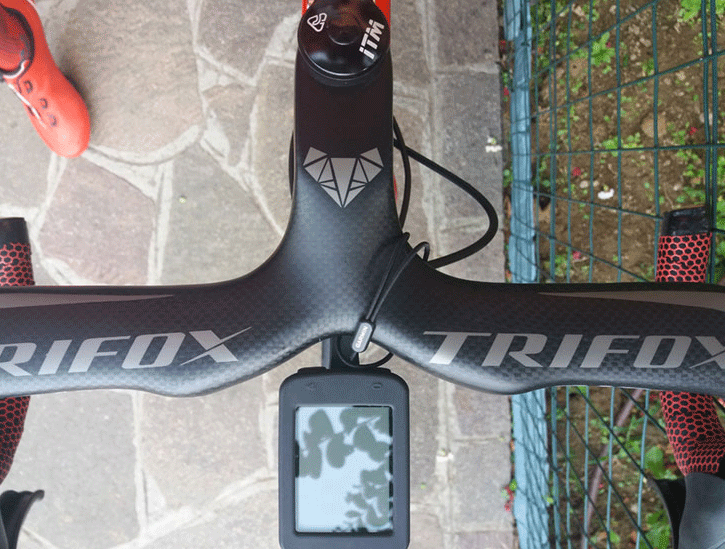
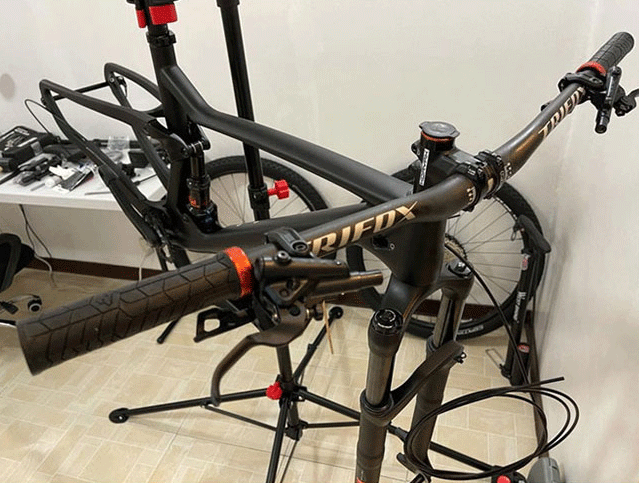
Cycling is an excellent way to stay fit and explore the outdoors. Whether you are a professional cyclist or a recreational rider, one component that can make or break your biking experience is the handlebar. Most people overlook the importance of the handlebars. However, having the right bike bar can significantly enhance your biking experience by improving your control, comfort, and efficiency.
In this blog, we explore the different types of bike bars, their benefits, and how to choose the right one for you.
Drop bars are the most common bike bars and are commonly used in road bikes. They have a curved design, and the curve points downward and towards the back, which provides a comfortable hand position. Drop bars are great for long-distance cycling, as they offer multiple hand positions, making it possible to switch up your cycling posture while you ride. They offer excellent aerodynamics, allowing you to take on higher speeds comfortably.
Flat Bars:
Flat bars are straight and have a flat design. They are commonly found in commuter bikes, fitness bikes, and mountain bikes. Flat bars are perfect if you want a relaxed upright riding position. They offer excellent control and stability, making them ideal for mountain biking and navigating tricky terrain.
Riser Bars:
Riser bars are the most comfortable bars and are commonly used in hybrid bikes, city bikes, and kids' bikes. They have an upward curve design, providing a comfortable and upright riding position. Riser bars are great for beginners, as they are easier to control. They are also a perfect choice for cycling for long hours, providing both comfort and ease.
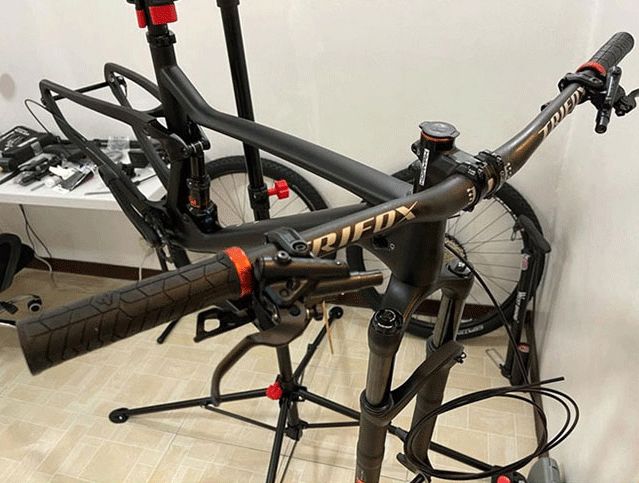
Conclusion:
In conclusion, having the right bike handlebar is essential for a comfortable and enjoyable cycling experience. The different types of bike bars offer varying benefits that suit different types of cycling. Whether you are a professional or a recreational cyclist, it's essential to consider your riding style and preferences before choosing a bike bar. Drop bars, flat bars, riser bars, bullhorn bars, and cruiser bars all have their unique features that cater to different cycling needs. So, take the time to assess your riding needs and choose the bike bar that best suits you. Happy cycling!
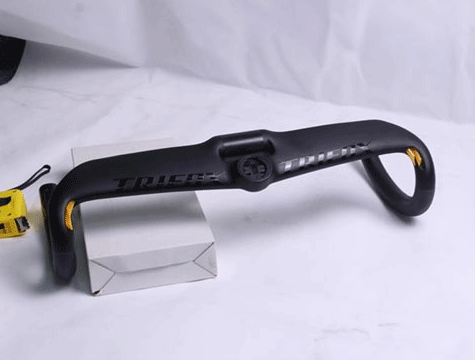
As a cyclist, have you ever felt like you’re working harder than you should be? Are you struggling to keep up with your cycling buddy, despite all the miles you’ve put in? If so, you might want to consider investing in a set of aerobars for your road bike. Aerobars are an accessory that can significantly improve the aerodynamics of your bike and help you go faster with less effort.
In this blog post, we will take a closer look at the benefits of aerobars, as well as introduce you to one of our favorites on the market: The aerobars for Road Bike TC20AF.
1. What are Aerobars?
Aerobars are accessories that attach to your road bike’s handlebars and extend out in front of you, allowing you to adopt a more aerodynamic riding position. By tucking in close to your bike, you reduce your body’s exposure to wind resistance, allowing you to move through the air with less drag. Aerobars consist of a set of extended bars, which attach to your bike’s existing handlebars, allowing you to lean on them comfortably. Some models also include a set of armrests, which further reduce the pressure on your hands and wrists when you’re in the aero position.
2. Benefits of Using Aerobars
By using aerobars, you can achieve a more aerodynamic riding position, which can lead to several benefits, including increased speed, improved endurance, and reduced fatigue. When you are in the aero position, you are allowing your body to cut through the wind resistance more efficiently, which means that you’re using less energy to maintain your speed. Additionally, by reducing the pressure on your hands and wrists, aerobars can help to reduce fatigue, allowing you to ride for longer periods without discomfort. Finally, if you’re competing, aerobars can give you a competitive edge, allowing you to shave crucial seconds off your race time.
3. Features of the TC20AF Carbon Drop Bar
One of our favorite aerobars on the market is the TC20AF Carbon Drop Bar. This aerobar is designed specifically for compact road bikes and features a unique aerofoil shape, which complements the latest aero road bikes. The tops are redesigned with smooth, aerodynamic curves and are constructed of TC20 full carbon fiber, which provides strength and stiffness while keeping weight to a minimum. The bar features internal cable routing for less drag, sleek aesthetics, and reliable setup of manual or electronic gear systems. The TC20AF also comes with a stopwatch bracket, which is perfectly compatible with Garmin and Bryton stopwatches.
4. How to Install Aerobars on Your Road Bike
Installing aerobars on your road bike is a fairly straightforward process. You’ll need a few tools, including a hex key, pliers, and a torque wrench to get started. First, remove your bike’s existing handlebar tape and any attachments. Next, remove the existing stem bolt and replace the stem cap with the aerobar clamp. Attach the aerobars to the clamp and make any necessary adjustments to the length and angle. Finally, install the brake and shifter cables through the aerobar extensions, add any armrests or pads, and re-wrap your handlebars.
、
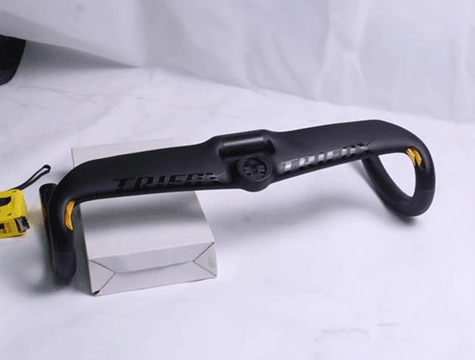
If you’re looking to improve your cycling performance, aerobars are a great accessory to consider. They allow you to assume a more aerodynamic position while reducing fatigue and improving your endurance. The TC20AF Carbon Drop Bar is one of the best aerobars on the market, featuring internal cable routing and a stylish aerofoil design. Installation of aerobars is straightforward, but if you're not confident in doing it yourself, it’s best to take your bike to a professional. So what are you waiting for? Upgrade your road bike with a set of aerobars and take your cycling performance to the next level.
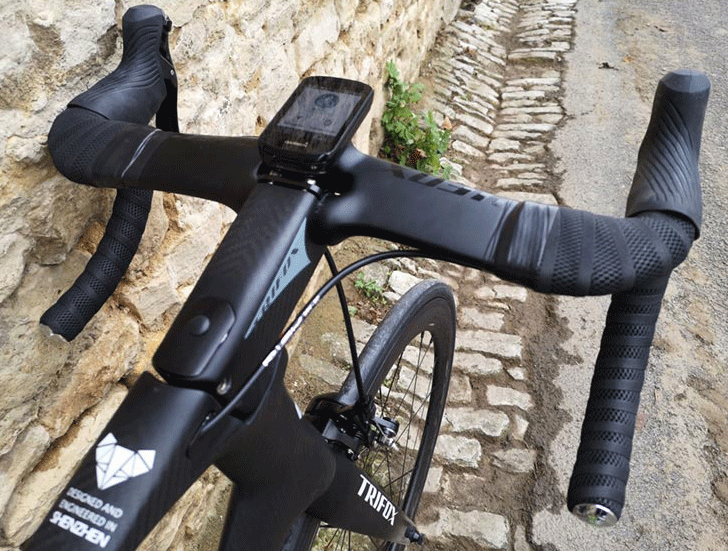
If you're a cyclist who is always seeking the latest and greatest technology to improve your ride, then you're in luck! The 31.8mm AERO Carbon Drop Bar TC20AF is a fantastic option for those looking to upgrade their road bike. It has an aerofoil shape and internal cable routing, making it both stylish and efficient.
First and foremost, let's talk about the design of this drop bar. The tops have a unique aerofoil shape that complements the latest aero road bikes on the market. This design is not only visually appealing but also serves a practical purpose. By reducing the surface area that's exposed to the wind while riding, airflow over the bike is improved. This means less drag and more speed. The drops of this bar are also ergonomically shaped, providing a comfortable grip for riders.
One of the most significant advantages of the 31.8mm AERO Carbon Drop Bar TC20AF is the internal cable routing. This is a significant improvement over traditional drop bars, where cables protrude from the bar and increase drag. With internal cable routing, the setup looks more streamlined, and clean. Plus, it can accommodate both manual or electronic gear systems. The routing is easy to install and ensures a reliable and long-lasting system.
Another notable feature of this drop bar is the stopwatch bracket that is included with purchase. The bracket is adjustable to ensure it will fit a variety of devices, and it's situated in a convenient location near the stem. This is a great feature for cyclists who are training for races or just interested in tracking their performance.
When it comes to the dimensions of the 31.8mm AERO Carbon Drop Bar TC20AF, it has a reach of 80mm and a drop of 125mm. The bar's width is also customizable, ranging from 380mm to 440mm. So riders can choose the perfect dimensions that suit their needs and preferences. Plus, with the bar's lightweight carbon construction, it keeps the overall weight of the bike low, which is always an advantage.

In conclusion, the 31.8mm AERO Carbon Drop Bar TC20AF is a fantastic option for anyone looking to upgrade their road bike's drop bar. With aerofoil shape tops, internal cable routing, and a stopwatch bracket that's compatible with popular devices, this drop bar offers a stylish and efficient solution. Plus, the customization options and lightweight carbon construction make it a practical choice for cyclists of all levels.
So, if you're in the market for a new drop bar, we highly recommend considering the 31.8mm AERO Carbon Drop Bar TC20AF for your next upgrade.

If you are a mountain biker, then you know that your handlebars are your main connection to your bike. That is why choosing the perfect handlebars is crucial for your performance, comfort, and safety. Handlebars come in various materials, shapes, and sizes, and each one has its own advantages and disadvantages. However, selecting the right handlebars can be overwhelming due to the vast options available.
1. Width
The width of your handlebars determines the control and stability you have while riding. The ideal handlebar width depends on your body structure, riding style, and the terrain you ride on. Generally, wider handlebars provide more control and stability, while narrow handlebars are ideal for technical riding. To determine the ideal width, stand up and measure the distance between your shoulder blades, then add 2-4 inches. This measurement will give you the perfect handlebar width for your body structure.
2. Material
Mountain bike handlebars are made of different materials, such as carbon fiber, aluminum, and titanium. Carbon fiber handlebars are the lightest and most expensive, but they offer the most shock absorption and comfort. Aluminum handlebars are the most popular choice among mountain bikers due to their affordability, durability, and stiffness. Titanium handlebars are light and strong, but they are the most expensive option. Choose the material that suits your budget and riding style.
3. Shape
Mountain bike handlebars come in various shapes, including flat, riser, and drop bars. Flat handlebars are ideal for cross-country riding and provide a more upright riding position. Riser handlebars are suitable for downhill riding and provide a more aggressive riding position. Drop bars are common in road cycling, but they are not recommended for mountain biking. Choose the shape that suits your riding style, terrain, and comfort.
4. Sweep
The sweep refers to the angle at which the handlebars bend back towards the rider. The sweep affects the hand position, wrist alignment, and comfort. Generally, handlebars with more sweep provide a more natural wrist position and are more comfortable for longer rides. However, too much sweep can affect steering precision and control. Choose the sweep angle that feels comfortable for your hand position and riding style.
5. Rise
The rise refers to the amount of distance the handlebars rise above the stem. The rise affects the riding position and comfort. Handlebars with more rise provide a more upright position and are suitable for cross-country riding. Handlebars with less rise provide a more aggressive position and are suitable for technical riding. Choose the rise that suits your riding style, comfort, and terrain.
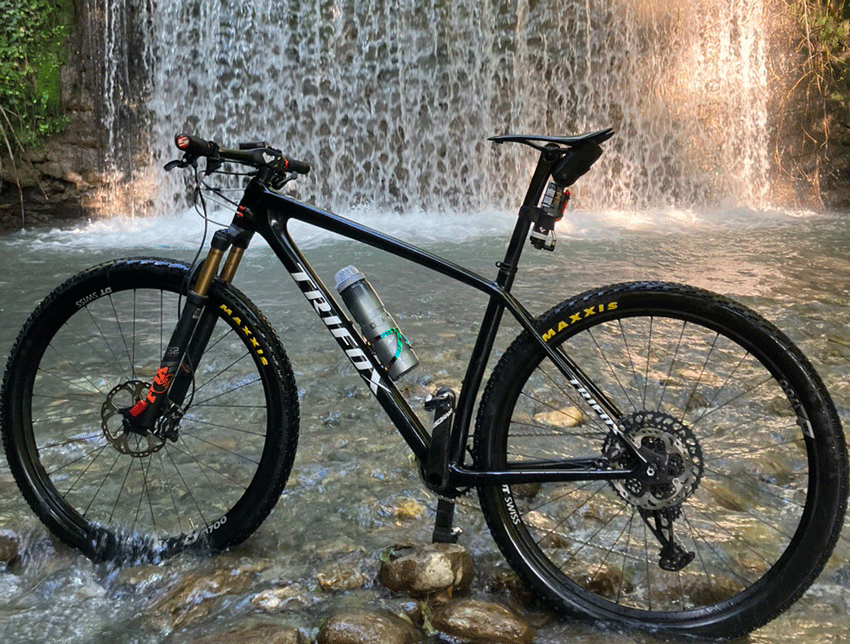
Conclusion:
Mountain bike handlebars might seem like a small component of your bike, but they play a significant role in your performance, comfort, and safety. When choosing the perfect handlebars, consider your body structure, riding style, terrain, and budget. Test different handlebars before making a final decision, and don't hesitate to seek expert advice. With the right handlebars, you'll have more control, more comfort, and more fun on the trails.

When it comes to cycling, having the right equipment can make all the difference in your comfort and performance. One key component of a bike that often gets overlooked is the handlebars. While there are many different types of handlebars available, straight handlebars have become increasingly popular over the years for their many benefits.
1. Improved control - One of the biggest benefits of using straight handlebars is the improved control they offer. Straight handlebars allow you to have a wider grip on your bike, which can help make tight turns and sudden stops easier to navigate. Additionally, the straight design gives you the ability to position your hands and body in a way that maximizes your control and stability.
2. Comfortable riding position - Another advantage of straight handlebars is the comfortable riding position they provide. When you ride with straight handlebars, you have more options for hand placement, which allows you to adjust your grip and positioning based on your preference. This can help to reduce fatigue and discomfort during longer rides, as well as alleviate strain on your wrists and upper body.
3. Versatility - Straight handlebars are also known for their versatility, as they can be used for a variety of cycling activities. Whether you’re commuting to work, riding for leisure, or tackling off-road trails, straight handlebars have the flexibility to accommodate your needs. They can also be customized with different grips, bars, and attachments to enhance your cycling experience.
4. Great for beginners - If you’re new to cycling, straight handlebars are a great option to start with. Their simple design and easy handling make them ideal for beginners who are still getting used to the feel of a bike. Plus, they are typically less expensive than other handlebar options, so you can experiment with different styles without breaking the bank.
5. Better visibility - Lastly, straight handlebars provide better visibility while cycling. When you are sitting upright with straight handlebars, you have a clearer view of the road or trail ahead, as well as your surroundings. This can help you to avoid obstacles or hazards, and stay aware of traffic or other cyclists on the road.

Conclusion: In conclusion, straight handlebars are an excellent option for any cyclist looking to improve their control, comfort, and versatility on the bike. From beginners to experienced riders, the benefits of using straight handlebars are clear. So why not give them a try and see how they can enhance your cycling experience?

The mountain biking handlebar stem is one of the most critical components of your bike. It is the connection point between your handlebars and your bike. It not only plays a significant role in determining the comfort and control of your ride but also affects the way your bike handles. Choosing the right MTB handlebar stem depends on a variety of factors, including your riding style, body type, and bike type.
In this blog post, we will guide you on how to choose the best handlebar stem for your riding style.
1. Length and Height
The length and height of the handlebar stem are the two most critical factors to consider when choosing a handlebar stem for your mountain bike. The length and height of your stem will affect your reach, your riding position, and the overall handling of your bike. Longer stems will provide a more stretched-out position, while shorter stems will provide a more upright riding position. Moreover, taller stems will raise the height of your handlebars, which can be helpful if you have a shorter torso.
2. Material
The handlebar stem is available in various materials, including aluminum, carbon fiber, and titanium. Aluminum is the most popular material for handlebar stems, primarily because of its strength, durability, and affordability. However, if you are looking for a more lightweight and rigid option, then carbon fiber is the way to go.
3. Clamp Diameter
Another critical consideration when choosing an MTB handlebar stem is the clamp diameter. The clamp diameter should match the diameter of your handlebars to ensure a secure fit. Most handlebar stems have clamp diameters of either 31.8 mm or 35 mm. However, there are some outliers that require a specific clamp diameter size.
4. Angle
The angle of your handlebar stem will also affect your riding position and comfort. The angle is usually measured in degrees, with most stems ranging from 0 to 17 degrees. An upward angle is excellent for riders who prefer a more upright, relaxed position, while downward angles are perfect for those who want a more aggressive riding position.

Conclusion:
Choosing the right handlebar stem for your mountain bike is crucial for a comfortable and enjoyable ride. Consider your riding style, body type, and bike type when selecting a handlebar stem. Remember to consider the length and height, material, clamp diameter, angle, and brand. By following these guidelines, you can enhance your riding experience and progress to your maximum potential.
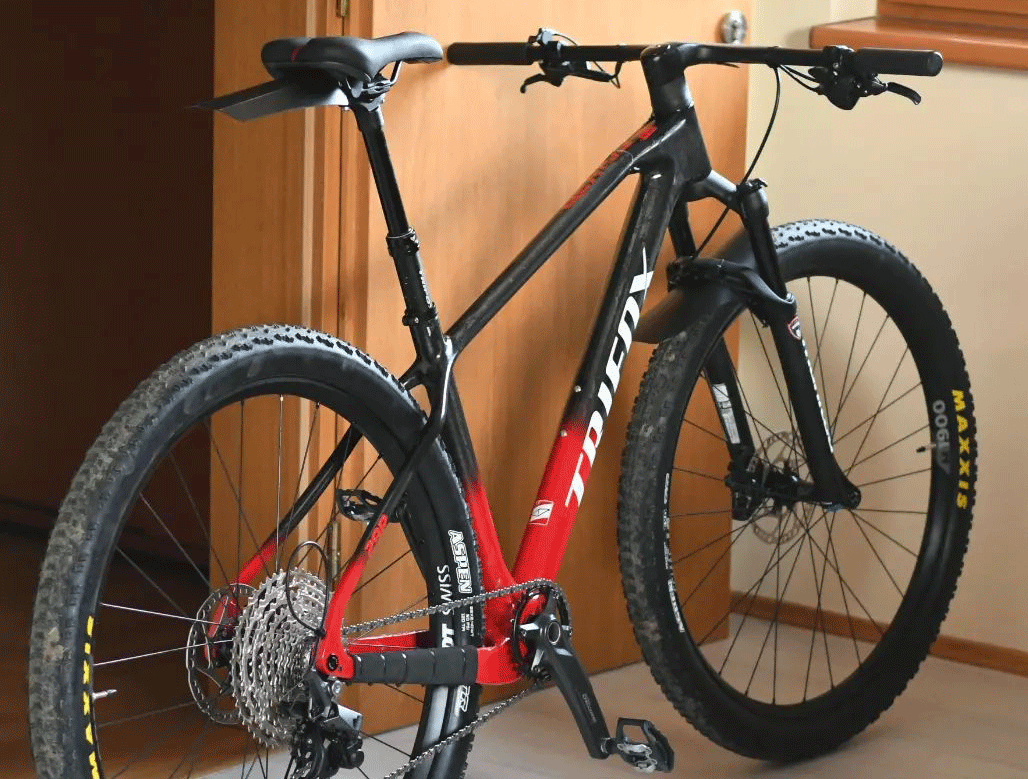
If you are an avid cyclist, you are probably familiar with the term “aero handlebars.” Aero handlebars are a type of handlebar that is designed to improve the aerodynamics of your bike, reduce wind resistance, and help you to go faster. They are commonly used in time trials and triathlons, but they can also be a valuable addition to a road bike.
If you are considering upgrading your road bike, here are some benefits to consider when it comes to aero handlebars.
1. Improved Aerodynamics
The main benefit of aero handlebars is improved aerodynamics. By reducing wind resistance, you can go faster with less effort. The shape of aero handlebars allows you to get into a more streamlined position, reducing the amount of drag caused by the wind. This means that you can maintain your speed for longer distances and save energy for the final push.
2. More Comfortable Riding Position
Aero handlebars are not only designed for speed, but they can also provide a more comfortable riding position. The specialized design allows you to rest your forearms on the bars, which reduces the strain on your shoulders and neck. This can be especially beneficial for long rides, as it minimizes discomfort and can help you to ride for longer periods of time.
3. Precise Control
Another added benefit of aero handlebars is that they give you greater control over your bike. With traditional handlebars, you have less control over the steering and braking of your bike. However, aero handlebars provide a greater range of hand positions, allowing you to make quick and precise maneuvers while maintaining your speed.
4. Stylish Look
Many cyclists choose aero handlebars simply because of the way they look. They have a sleek and aerodynamic design that adds an instant upgrade to your bike’s appearance. They are available in a variety of colors and finishes, so you can choose one that complements your existing bike components.
5. Customizable Options
Finally, aero handlebars come in a range of customizable options to suit your specific needs. They can be adjusted to different lengths and widths to fit your body type and riding style. Additionally, they can be combined with other components, such as aero extensions, to create a personalized and optimized riding experience.
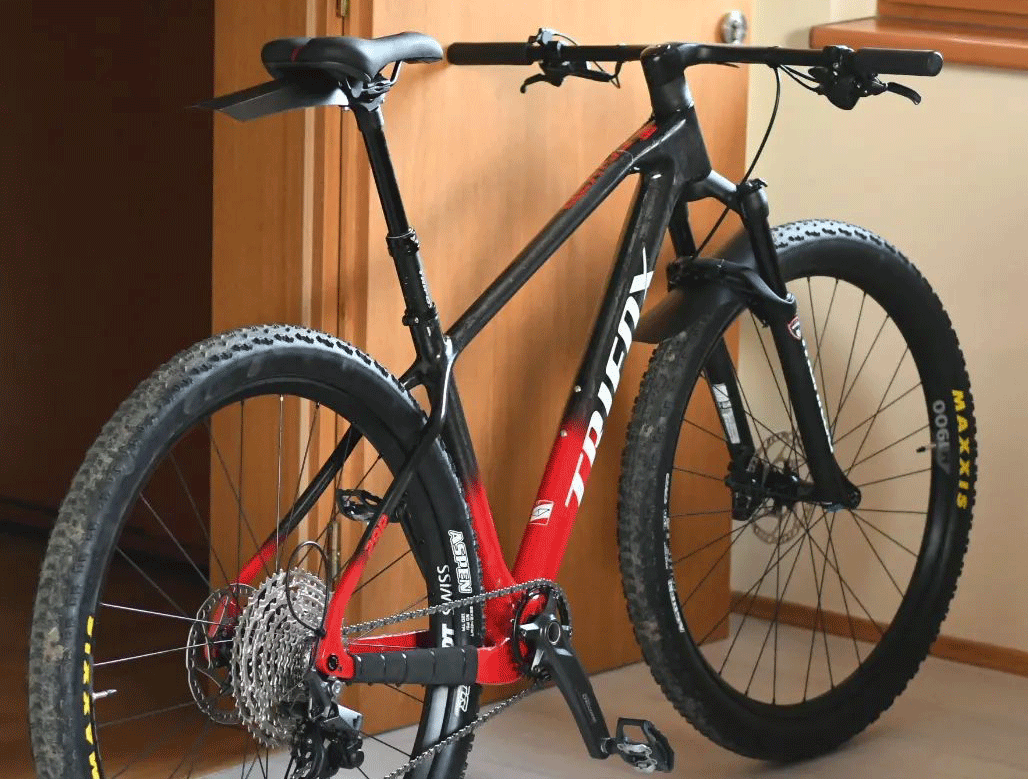
Conclusion:
In summary, aero handlebars are a valuable addition to any road bike. They not only provide improved aerodynamics and a more comfortable riding position, but they also add greater control and style to your bike. With customizable options to suit your specific needs, aero handlebars can be a worthwhile investment for any avid cyclist.
If you are looking to up your cycling game and improve your speed and comfort, consider adding a pair of aero handlebars to your ride.

























































